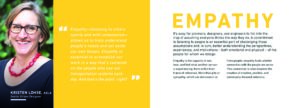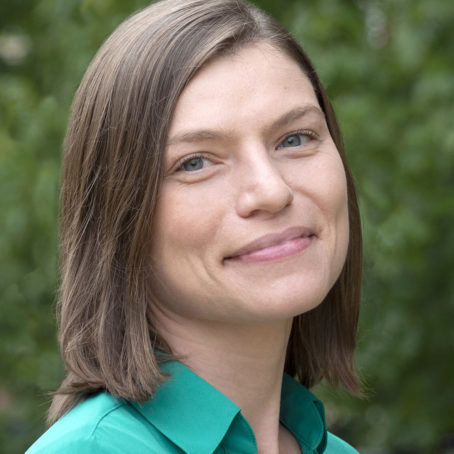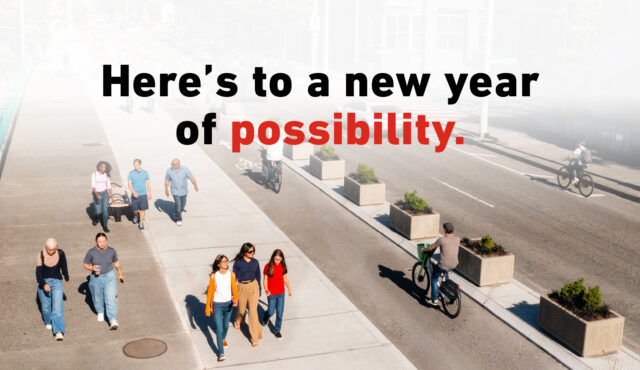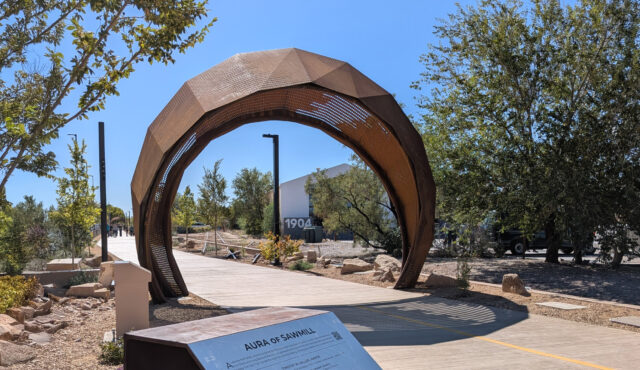Emotion plays a role in everything we do, whether we are aware of it or it’s happening unconsciously in the background. Our work at Toole Design changes the physical environment and has a big impact on our world, and thus comes with a responsibility to research, listen, and observe to help define problems and apply appropriate solutions. Sometimes we underestimate just how much influence emotion has in shaping these problems. Unfortunately, I have a constant reminder: a bike crash I experienced with my daughter a couple of years ago.
While I know we are lucky and the outcome of the crash could have been worse, I’m pretty confident that even the most fearless bicyclist would be changed after seeing their three-year-old child the way I saw mine. And while time did heal my bruises, challenges remain that affect my everyday activities. For example, there are still times when I struggle to walk. For me, the emotional trauma of the bike crash has caused my body to create an abnormal movement pattern. My brain, nerves, and muscles are not functioning together as they should; my nervous system is stuck in this pattern right now and I’m working on getting my walking back to how it was before.
At first, none of this made sense. How could my emotions unconsciously create physical symptoms? I’m a graphic designer. My expertise does not include brain function and neurology. As I sought more answers, I became interested in the work of psychologist and neuroscientist Lisa Feldman Barret. In her popular 2018 Ted Talk, she says, “… emotions are guesses. They are guesses that your brain constructs in the moment where billions of brain cells are working together, and you have more control over those guesses than you might imagine that you do.” This reinforced my doctor’s message that I could work to rebuild those neurological connections and gain more control over those guesses; walking as I did before the crash must go hand-in-hand with my emotional healing.
Today, I’m rebuilding connections literally one step at a time. I know now that it’s not about walking further or faster. With help from Mayo Clinic, I’ve learned that it’s all about quality motion and repetition. Stopping to reset, and focusing on breathing will help me retrain. I have good and bad days. Sometimes I trip over my own foot as I’m walking down the sidewalk, or my cane gets tangled in long plant leaves, but I’m figuring things out. I am also experiencing the importance of universal design from a new perspective. Feeling happy about my little daily accomplishments can fuel more joy to help me meet my next little goal. Normal walking may come and go for me, but what is “normal” anyway? I can only try my best to keep healing.
Our world has been through some sudden trauma during the past few months. Taking a step back to define the problems and ask tough questions helps determine what’s truly important. This is an incredibly challenging time and a lot of things that seem beyond our individual control will take a long time to fix. Yet there are a lot of things we can influence if we take things one step at a time and start to tackle our emotions as we break down barriers and obstacles to a healthy and more just society.
 Kristen Lohse wrote about how empathy and compassion require a lot more effort, show greater understanding, and result in a greater sense of connectedness in her piece on Empathy. We all have to work together to find solutions and repair our broken connections. Listening to the people around us, especially with an ear for the emotions they are expressing, is a great start for healing the many recent traumas, and those that some people have experienced all their lives. Honestly, I don’t know that anyone has all the answers right now—but I am going to keep making my best guesses, one step at a time.
Kristen Lohse wrote about how empathy and compassion require a lot more effort, show greater understanding, and result in a greater sense of connectedness in her piece on Empathy. We all have to work together to find solutions and repair our broken connections. Listening to the people around us, especially with an ear for the emotions they are expressing, is a great start for healing the many recent traumas, and those that some people have experienced all their lives. Honestly, I don’t know that anyone has all the answers right now—but I am going to keep making my best guesses, one step at a time.



